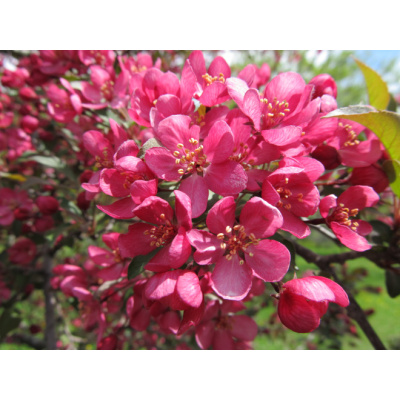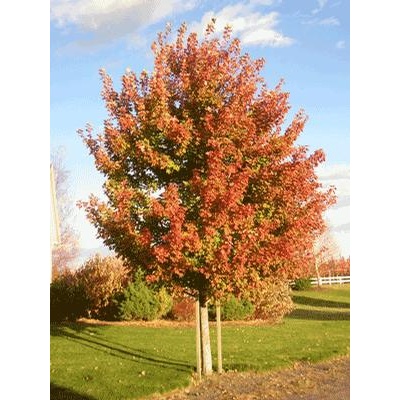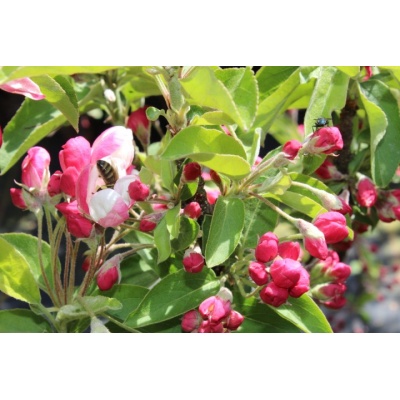Description
 Acer rubrum ‘Northwood’
Acer rubrum ‘Northwood’
Common Name: red maple
Type: Tree
Family: Sapindaceae
Zone: 3 to 9
Height: 40.00 to 60.00 feet
Spread: 25.00 to 40.00 feet
Bloom Time: March to April
Bloom Description: Red
Sun: Full sun to part shade
Water: Medium to wet
Maintenance: Low
Suggested Use: Shade Tree, Street Tree, Rain Garden
Flower: Showy
Leaf: Good Fall
Tolerate: Wet Soil, Air Pollution
Culture Easily grown in average, medium to wet, well-drained soil in full sun to part shade. Tolerant of a wide range of soils, but prefers moist, slightly acid conditions. Very cold hardy.
Noteworthy Characteristics Acer rubrum, commonly called red maple, is a medium-sized, deciduous tree that is native to Eastern North America from Quebec to Minnesota south to Florida and eastern Texas. It typically grows 40-60’ tall with a rounded to oval crown. It grows faster than Norway and sugar maples, but slower than silver maple. In northern states, red maple usually occurs in wet bottomland, river flood plains and wet woods, but in Missouri it typically frequents drier, rocky upland areas. Emerging new growth leaves, leafstalks, twigs, flowers, fruit and fall color are red or tinged with red. Quality of red fall color on species plants is variable. Leaves (to 2-5″ long) have 3 principal triangular lobes (sometimes 5 lobes with the two lower lobes being largely suppressed). Lobes have toothed margins and pointed tips. Leaves are medium to dark green above and gray green below. Flowers on a given tree are primarily male or female or monoecious and appear in late winter to early spring (March-April) before the leaves. Fruit is a two-winged samara.
Genus name is the Latin name for a maple tree.
Specific epithet of rubrum meaning red is everywhere in evidence: red flowers in dense clusters in late March to early April (before the leaves appear), red fruit (initially reddish, two-winged samara), reddish stems and twigs, red buds, and, in the fall, excellent orange-red foliage color.
‘Northwood’ will grow 40-60′ tall with a rounded to oval crown. Leaves are shiny green above and pale green beneath, 3-5 lobed and 3-6″ across. University of Minnesota introduction. This cultivar is best grown in northern states because it needs cool weather and frost for best fall color, and will generally not produce good fall color in the deep south.
Problems No serious insect or disease problems. Watch for aphids, leafhoppers, borers, scale and caterpillars. Verticillium wilt attacks the vascular system and can be fatal. Canker, fungal leaf spot and root rots may also occur. Wind and ice may break some branches. Leaf hoppers can cause substantial damage.
Garden Uses
Plant as a specimen tree for the lawn, street or park. It is of note that this tree has a shallow, flattened root system that may buckle nearby sidewalks or driveways if planted too close.




Reviews
There are no reviews yet.